The restaurant industry, a notoriously challenging landscape, sees approximately 30 percent of new establishments fail within their first year, according to estimates from the National Restaurant Association. It takes a delicate balance of culinary skill, business acumen, and effective marketing to merely survive, let alone thrive. Yet, the allure of the hospitality world often proves irresistible, even to those who have already achieved immense success in other fields. Many celebrities, armed with star power and a desire to diversify their portfolios, have ventured into this high-risk business, hoping their fame will guarantee a steady stream of diners.
Indeed, having a household name associated with a restaurant concept is a surefire way to generate initial buzz. The public’s curiosity to experience a slice of celebrity lifestyle, or perhaps just to eat at a place connected to their idols, can fill tables for a time. We’ve seen examples of this working well, such as Bad Bunny’s Miami steakhouse, Gekkō, or Mark and Donnie Wahlberg’s burger chain, Wahlburgers, which continue to enjoy success. However, star power alone rarely translates into sustained culinary triumph, and the industry is littered with tales of grand openings quickly followed by inglorious closures.
This article delves into the fascinating, often cautionary, tales of celebrity-owned restaurant concepts that, despite their famous backers, ultimately failed to withstand the pressures of the culinary world. We’ll explore the practical implications of these ventures, from logistical nightmares and financial missteps to critical panning and public disinterest, revealing that the path from red carpet to restaurant success is far more complex than it appears. These are the stories behind some of the most spectacular celebrity restaurant failures, offering insights into why even the biggest names couldn’t keep their kitchens open.

1. Britney Spears – Nyla
In 2002, at the peak of her pop princess reign, Britney Spears launched her own restaurant, Nyla, within the opulent Dylan Hotel in New York City. The ambitious concept initially began as a Cajun restaurant, aiming to bring a taste of Louisiana to the Big Apple. However, the vision quickly pivoted, with Nyla swiftly transforming into an Italian cuisine establishment, a significant change that perhaps signaled early instability in its direction.
Despite the immense celebrity wattage behind it, Nyla’s journey was fraught with difficulties from the outset. The restaurant reportedly suffered from a litany of health code violations, issues that can rapidly tarnish a new eatery’s reputation and deter potential diners. Coupled with these operational challenges were persistent financial troubles, suggesting a lack of robust business management from its inception.
Britney Spears herself reportedly abandoned the project within the same year of its opening, a move that undoubtedly accelerated its decline. This swift departure left restaurant suppliers with substantial unpaid bills, amounting to over $25,000, underscoring the financial fallout and the impact on those connected to the venture. Nyla, which lasted a mere 179 days longer than Spears’s famously brief Las Vegas marriage, permanently closed its doors soon after, becoming a stark example of how celebrity endorsement alone cannot guarantee a restaurant’s longevity in the face of fundamental flaws.
Read more about: The Unseen Chains: How Contractual Obligations Defined Britney Spears’ Enduring Career

2. Jennifer Lopez – Madre’s
Pop superstar and actress Jennifer Lopez also ventured into the restaurant business in 2002, opening Madre’s in Pasadena, California. The establishment aimed to offer an upscale dining experience, specializing in Puerto Rican and Cuban cuisine, a nod to Lopez’s heritage. The ambiance was designed to be luxurious, even featuring an in-house cigar maker to enhance its exclusive appeal.
However, the restaurant’s operations quickly encountered difficulties, particularly concerning management. Lopez initially tapped her first husband, Ojani Noa, to oversee the business, a decision that proved short-lived. She fired him just six months after the restaurant opened, indicating significant internal discord and a probable lack of professional experience in restaurant operations. This managerial instability likely contributed to the challenges Madre’s faced.
Eater reported that Madre’s, despite its glamorous owner, received lackluster reviews from critics, suggesting the culinary offerings and overall dining experience failed to meet expectations. Nevertheless, the restaurant managed to stay afloat for several years, primarily attributed to J.Lo’s undeniable star power, which continued to draw patrons through its doors. Ultimately, however, this celebrity appeal wasn’t enough to sustain it indefinitely, and Madre’s closed its doors for good in 2008, another high-profile casualty in the competitive restaurant scene.
Read more about: Beyond the Buzz: Unpacking the Failures of High-Profile Celebrity Restaurants and the Role of Critical Reviews

3. Flavor Flav – Flav’s Fried Chicken
Hype man, rapper, and reality star Flavor Flav, known for his distinctive clock necklace and boisterous persona, decided to expand his résumé by venturing into the fast-food industry in 2011. He launched Flav’s Fried Chicken, a concept built around his own homemade chicken recipe, with grand ambitions of creating a national franchise. These hopes, however, were quickly dashed as the business disintegrated just four months after its grand opening.
The rapid closure of Flav’s Fried Chicken was attributed to a confluence of factors, although the exact reasons remain disputed. A significant contributing element was reportedly Flav’s dramatic fallout with his business partner, a common pitfall in celebrity ventures where personal dynamics can override professional necessities. Such internal strife often trickles down, creating instability and undermining operations.
Adding to the restaurant’s woes were specific operational failures that became public. Flavor Flav himself discovered potato salad in the kitchen that was over a month beyond its sell-by date, a clear health and quality control issue. Reports also surfaced of “rubber paychecks” for employees, indicating severe financial mismanagement and a lack of proper compensation. The choice of location—opening in the middle of Clinton, Iowa—was also cited as a significant “misstep,” suggesting a failure in market analysis. All these elements combined to make Flav’s Fried Chicken, as the context notes, “sounded like a joke from the word go,” highlighting a profound disconnect between concept and execution that doomed the venture almost instantly.
Read more about: Beyond the Buzz: Unpacking the Failures of High-Profile Celebrity Restaurants and the Role of Critical Reviews
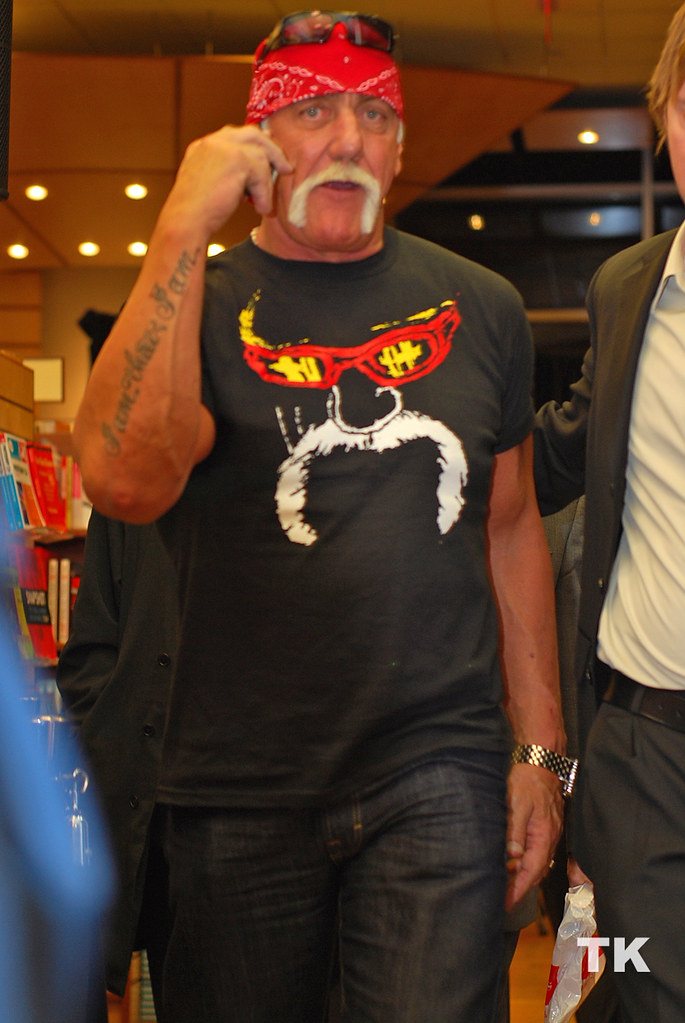
4. Hulk Hogan – Hulk Hogan’s Pastamania!
In 1995, WWE legend Hulk Hogan brought his larger-than-life persona to the culinary world with the opening of Hulk Hogan’s Pastamania! This fast-casual pasta restaurant was launched with considerable fanfare, strategically located in the Mall of America in Minnesota, a high-traffic venue promising a steady stream of potential diners and Hulkamaniacs. The menu was infused with Hogan’s wrestling brand, offering themed dishes like “Hulk’s Power Pasta” and “Hulkaroni,” designed to appeal directly to his legions of fans.
Despite aggressive marketing tactics, which even included the Hulkster defending his WCW heavyweight championship against Big Bubba out front on Monday Nitro, the celebrity endorsement and branded menu items were, tragically, not enough to sustain the business. The novelty of eating “Hulkaroos” and “Hulk-U’s” quickly wore off, revealing deeper issues beneath the surface of the promotional hype.
The restaurant reportedly suffered from significant financial troubles, described as “money hemorrhaging,” from its inception. These substantial losses ultimately led to its closure within just one year of operation. The venture’s swift demise underscored a fundamental truth: even the most iconic celebrity branding cannot overcome a flawed business model or insufficient culinary appeal. As the context wryly notes, “even he knew it was a dumb f****** idea. Brother,” highlighting a candid admission of the concept’s inherent impracticality.
Read more about: Beyond the Buzz: Unpacking the Failures of High-Profile Celebrity Restaurants and the Role of Critical Reviews

5. Steven Spielberg – Dive!
Acclaimed film director and producer Steven Spielberg, alongside Dreamworks co-founder Jeffrey Katzenberg, made an unexpected foray into the restaurant industry in 1994 with Dive! The 300-seat establishment, located in Los Angeles’s upscale Century City Shopping Center, was a colossal undertaking, costing a reported $7 million to construct. It immediately garnered significant media buzz, largely due to its striking exterior feature: a massive submarine tower that promised a unique dining experience.
The restaurant’s theme was, predictably, centered around submarines, with its menu exclusively focused on submarine sandwiches. This thematic consistency, however, veered into excessive tackiness, with “groaners” like “sub-stantial salads” and “sub-lime desserts” gracing the menu. Adding to the immersive, if somewhat cringeworthy, experience were flashing red lights every thirty minutes, signaling a scheduled “dive” within the restaurant itself.
Despite the initial curiosity generated by its celebrity backing and elaborate theme, Dive! received mixed reviews from patrons and critics alike. The overly niche menu and the restaurant’s “excessive tackiness” ultimately failed to sustain long-term interest or culinary credibility. The Los Angeles location “made its final voyage to the bottom of the sea” and shuttered in 1999, just five years after opening. A second location in Las Vegas, which opened later, also closed its doors a few years after, cementing Dive! as a notable, albeit expensive, celebrity restaurant flop.
Read more about: Beyond the Buzz: Unpacking the Failures of High-Profile Celebrity Restaurants and the Role of Critical Reviews

6. Jessica Biel – Au Fudge
Actress Jessica Biel entered the competitive West Hollywood dining scene in 2016 with Au Fudge, a restaurant concept specifically designed with a kid-friendly focus. The venture generated considerable buzz, with media outlets describing it as a “Soho House for kids,” implying a chic, exclusive, yet family-oriented atmosphere. The menu attempted to cater to both children and adults, offering everything from classic chicken nuggets to a more indulgent caviar-topped omelet, aiming for broad appeal.
Despite the initial hype and its prime location, the unique concept wasn’t enough to keep the business financially viable. The costs associated with creating such an elaborate, dual-purpose dining and play space, coupled with the inherent challenges of the restaurant industry, proved overwhelming. Au Fudge struggled to turn a profit, a fact Biel herself candidly admitted.
During a 2017 appearance on Jimmy Kimmel Live, Biel acknowledged that the restaurant was “not making any money,” a stark and honest revelation about its financial difficulties. This public admission foreshadowed the inevitable. Au Fudge eventually closed its doors for good in 2018, just two years after its much-publicized opening. It stands as a testament to the fact that even a well-intentioned, buzz-worthy concept with a celebrity face can succumb to the harsh economic realities of the restaurant business if it fails to achieve profitability.
Read more about: Beyond the Buzz: Unpacking the Failures of High-Profile Celebrity Restaurants and the Role of Critical Reviews

7. Eva Longoria – Beso & SHe By Morton’s
Actress Eva Longoria has experienced significant setbacks in the restaurant industry, demonstrating that even multiple attempts with varying concepts can prove challenging. Her initial venture was Beso, a swanky Vegas steakhouse that also featured a nightclub called Eve. Despite enlisting celebrity chef Todd English to run the kitchen, Beso quickly became embroiled in a series of scandals and lawsuits, hindering its chances of success from the outset.
The financial troubles were severe, with the restaurant reportedly operating in bankruptcy by January 2013 and losing more than $76,000 per month. These significant losses forced a temporary closure, and only the intervention of restaurant and casino operator Landry’s Restaurants Inc. prevented its permanent shutdown, highlighting the precarious financial state Beso was in. This initial steakhouse concept, plagued by legal and financial woes, ultimately made way for a new endeavor in the same space.
In 2013, the location reopened as SHe, a steakhouse concept specifically geared toward a female clientele. The nightclub on the top level of SHe, however, proved exceptionally short-lived, lasting a mere seven weeks before it was abandoned. The bottom half of the restaurant, renamed SHe by Morton’s, persisted slightly longer, attempting to differentiate itself with “She-Cuts,” “He-Cuts,” and “We-Cuts” for steak portions, and a dessert menu that cleverly incorporated a built-in mirror for lipstick reapplication. Despite these efforts to appeal to its target demographic, SHe By Morton’s faced its own set of critical problems. Following several health code violations, the restaurant was forced to shut down in 2014, marking another high-profile failure in Longoria’s restaurant portfolio. Her repeated bad luck underscores the inherent volatility and unforgiving nature of the restaurant business, even for a well-known personality like Eva Longoria.
Read more about: Beyond the Buzz: Unpacking the Failures of High-Profile Celebrity Restaurants and the Role of Critical Reviews
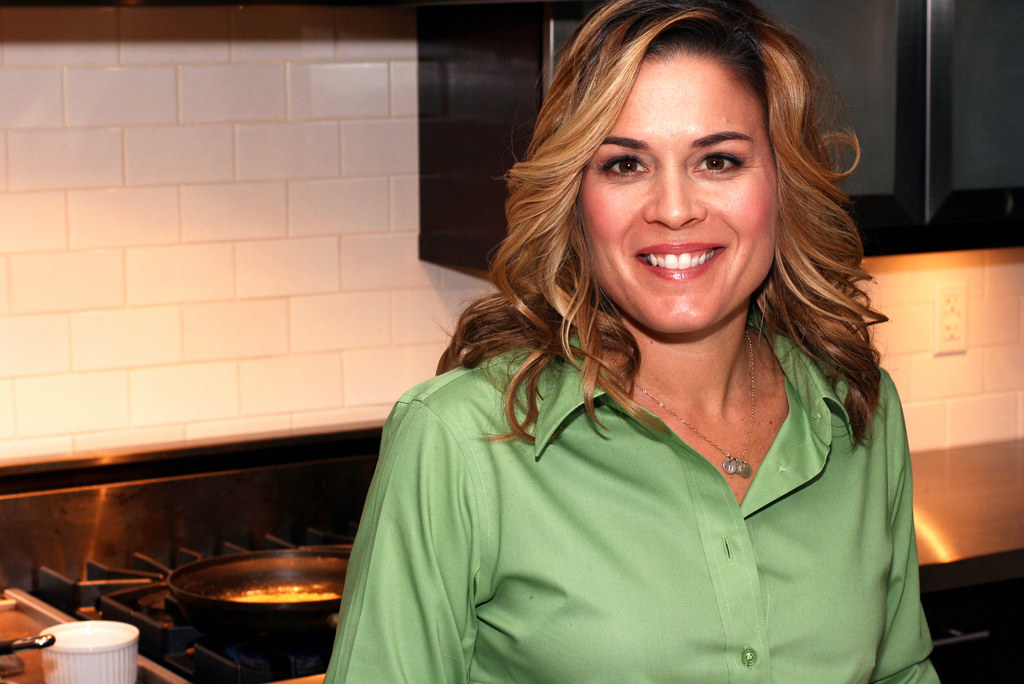
8. Cat Cora’s FatBird
Cat Cora, a trailblazing figure in the culinary world and the first woman to win ‘Iron Chef America,’ boasts an impressive track record with numerous successful restaurant ventures. Her name is associated with many thriving establishments like Postino and Kouzzina, along with hundreds of pop-ups. However, even for a chef of her caliber, the restaurant industry can present unexpected pitfalls, as seen with her Southern-themed restaurant, FatBird.
FatBird launched in New York City’s bustling Meatpacking District in June 2016, aiming to offer comfort food classics such as baby back ribs and spicy chicken. Despite Cora’s esteemed reputation and a seemingly straightforward concept, the venture was reportedly plagued by constant problems from its very inception. This instability hinted at deeper issues within its operations, challenging its path to success.
A significant blow to FatBird’s viability came just four months after its debut when Cora filed a lawsuit against her business partner, Charissa Davidovici. The suit alleged that Davidovici reneged on an agreement to pay Cora a substantial $400,000 fee for licensing her name and recipes. Such internal disputes often signal a lack of cohesive vision and can severely undermine a restaurant’s chances of survival.
Adding to its woes, critical reception for FatBird was far from enthusiastic, with many reviewers finding the food items unsavory. The combination of legal entanglements and poor culinary reviews proved insurmountable. FatBird ultimately went dark after a remarkably brief seven-month lifespan, serving as a stark reminder that even a celebrity chef’s involvement doesn’t guarantee smooth sailing in the unforgiving restaurant business.
Read more about: Beyond the Buzz: Unpacking the Failures of High-Profile Celebrity Restaurants and the Role of Critical Reviews

9. Anne Burrell’s Phil and Anne’s Good Time Lounge
Anne Burrell, a dynamic personality known for her high-energy cooking and reality shows on the Food Network, returned to the New York restaurant scene in 2017. She partnered with bar owner Phil Casaceli to open Phil and Anne’s Good Time Lounge in Brooklyn, a venture that promised a vibrant atmosphere and shareable Mediterranean and Italian dishes, alongside a signature burger and tater tots.
From its inception, the restaurant cultivated a brash and colorful environment, with walls adorned in brightly-colored illustrations, aiming to create a memorable and enjoyable dining experience. Located in an often bustling Cobble Hill neighborhood, the establishment initially seemed poised for success, drawing on the combined professional reputations of Burrell and Casaceli.
However, despite the promising concept and location, the underlying business relationship between the two partners proved to be a critical flaw. Just under a year after its opening, Phil and Anne’s Good Time Lounge abruptly closed its doors without advance notice, leaving patrons and industry observers curious about its sudden demise.
Burrell’s representative later clarified the situation, stating, “Unfortunately, she and Phil have had differences of opinion during their business relationship that made running a restaurant together impossible.” This candid explanation highlights how personal dynamics and disagreements among partners can quickly derail even a well-conceived restaurant project, irrespective of the culinary talent involved, showcasing the fragile nature of such collaborations.
Read more about: Beyond the Buzz: Unpacking the Failures of High-Profile Celebrity Restaurants and the Role of Critical Reviews

10. Carla Hall’s Southern Kitchen
Carla Hall, a beloved ‘Top Chef’ fan favorite, celebrated cookbook author, and former co-host of ‘The Chew,’ channeled her Nashville roots into her first restaurant, Carla Hall’s Southern Kitchen. Opening in Brooklyn in 2016, the establishment aimed to serve authentic Southern comfort food at reasonable prices, featuring classics like fried chicken, collard greens, cornbread, and banana pudding.
Despite Hall’s significant public profile and a clear culinary vision, the Brooklyn startup was beset by “a string of bad choices and just plain rotten luck.” Hall herself candidly revealed at a 2017 conference that it took two and a half years to open the doors, only for the restaurant to operate for a single year, highlighting the immense challenges faced during its brief existence.
The restaurant endured several severe operational setbacks that significantly damaged its early reputation. Just two months after opening, an electrical fire forced a temporary shutdown, a tragic event that further complicated its initial fragile period. This was compounded by two separate walk-in refrigeration unit failures, leading to spoilage and further closures. Hall noted, “People just didn’t trust us to come there. We were letting them down and they were already making an effort to come to us,” reflecting the erosion of customer confidence.
Beyond these misfortunes, the restaurant also faced strategic and public relations hurdles. Its location in a hard-to-access Brooklyn neighborhood proved to be a practical barrier for many potential diners. Furthermore, Hall received criticism from the “social media community” for using Kickstarter for initial funding, adding an unexpected layer of negative publicity. Her contract with ‘The Chew’ also prevented her from promoting the restaurant on television or social media, severely limiting her ability to leverage her celebrity for marketing. These combined factors ultimately led to the closure of Carla Hall’s Southern Kitchen after just one year.
Read more about: Beyond the Buzz: Unpacking the Failures of High-Profile Celebrity Restaurants and the Role of Critical Reviews
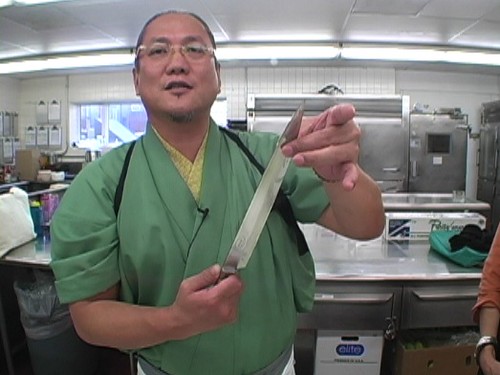
11.Masaharu Morimoto’s Tribeca Canvas
Masaharu Morimoto, widely celebrated as the quintessential ‘Iron Chef’ for his exceptional competition record and acclaimed as an executive chef at Nobu, has established a global empire of successful Japanese and Pan-Asian restaurants. His culinary reputation is built on beautifully crafted high-end cuisine and sushi. However, even a chef of his renown can encounter challenges when venturing beyond his established strengths, as evidenced by Tribeca Canvas.
In 2012, Morimoto took a distinct turn from his signature style, opening Tribeca Canvas in New York as a concept serving American-style, Asian-accented pub food. The menu featured unexpected items like shrimp nachos, chicken pot pie, and pork ribs, a significant departure from the delicate Japanese fare that made him famous. This concept, perhaps too far outside his culinary wheelhouse, struggled to resonate with critics and diners alike.
The initial iteration of Tribeca Canvas lasted a mere nine months before Morimoto was compelled to close it down for a reboot, signaling a clear acknowledgment of its early struggles and conceptual missteps. In August 2013, he shuttered the restaurant, replaced his old business partners with new ones, and relaunched it simply as Canvas, hoping for a fresh start and a renewed vision.
Following an extensive interior redesign and a revised menu that more closely aligned with Morimoto’s strengths of Japanese classics and sashimi, the restaurant was once again renamed, this time to Bisutoro. Despite these concerted efforts to refine the concept and align it with his proven expertise, Bisutoro managed to stay open for just a few months before closing permanently in January 2014. This series of rapid reboots and eventual closure underscores the critical importance of a cohesive and well-executed concept, even for a chef of Morimoto’s stature.
Read more about: Beyond the Buzz: Unpacking the Failures of High-Profile Celebrity Restaurants and the Role of Critical Reviews

12. Jonathan Waxman’s Waxman’s and JBird
Jonathan Waxman, a chef instrumental in defining and popularizing California cuisine alongside Alice Waters in the 1970s and 1980s, has had a successful career with well-received restaurants on the East Coast and appearances on popular food television shows. His highly anticipated return to California in March 2016 marked a significant moment with the debut of Waxman’s in San Francisco’s historic Ghirardelli Square.
Waxman’s aimed to offer a refined yet approachable dining experience, featuring a limited, curated dinner menu that emphasized fresh produce, locally caught seafood, and inventive pizzas. A highlight was the chef’s signature dish: roast chicken with salsa verde, intended to draw diners seeking both quality and a taste of Waxman’s renowned culinary style.
However, a little over a year after its opening, in 2017, Waxman’s announced a hiatus for renovations, leading to its temporary closure. To maintain a presence and serve customers during this period, the eponymous chef launched JBird, a takeaway concept in an adjacent building, with a menu primarily based on his famous roast chicken with salsa verde. This strategy was an attempt to bridge the gap and keep the brand active.
Tragically, Waxman’s never reopened its doors after the announced renovations. JBird, the temporary takeaway, also had an extremely short lifespan, closing after only about a month of service. The situation escalated with reports that Waxman reportedly departed the restaurants owing more than $100,000 in unpaid rent and cleaning fees, painting a clear picture of financial distress and an abrupt end to his much-anticipated return to the California culinary scene.
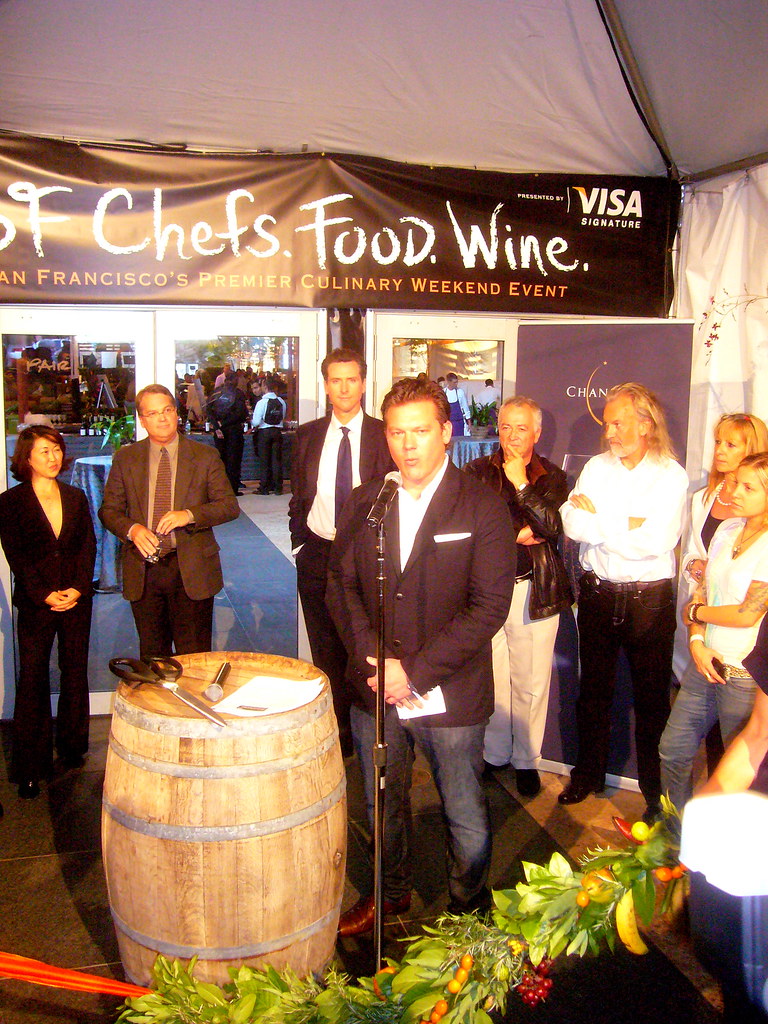
13. Tyler Florence’s Rotisserie and Wine
Tyler Florence, one of the Food Network’s earliest and most prominent stars, leveraged his extensive television career and numerous cookbooks to build a growing empire of culinary establishments. In December 2010, he opened Rotisserie and Wine in Napa, California, positioned as the second entry in his expanding portfolio, shortly after the successful launch of San Francisco’s Wayfare Tavern.
Rotisserie and Wine was envisioned as a low-key, yet elevated fast-food spot, centered around expertly prepared rotisserie meats. The menu thoughtfully paired these with traditional Southern and Midwestern sides and a selection of California wines, aiming for a sophisticated yet accessible dining experience in the heart of Wine Country.
However, the restaurant encountered operational difficulties, including failing a health department inspection just before its seemingly temporary shutdown. While initial announcements suggested a remodel during the region’s typical winter tourism downturn, hopes for a reopening were soon dashed. The underlying issues proved more significant than mere seasonal adjustments or renovations.
By the summer season of 2012, Florence confirmed that Rotisserie and Wine would remain permanently closed. He articulated the decision as a strategic move to “consolidate and focus our efforts on our other two restaurants, Wayfare Tavern and El Paseo,” indicating a shift in business priorities. Despite its promising concept and celebrity backing, the Napa endeavor lasted a mere 18 months, highlighting the intense competition and constant need for strategic recalibration in the restaurant industry.
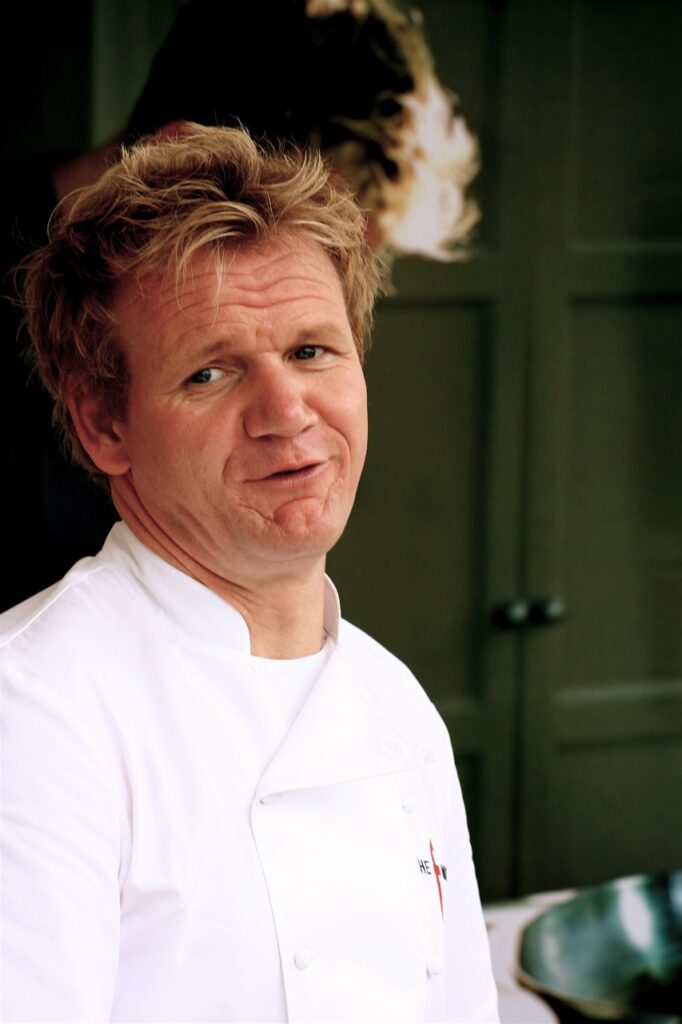
14. Gordon Ramsay’s Fat Cow
Gordon Ramsay, the mega-famous celebrity chef renowned for his fiery television persona and an impressive collection of Michelin stars, commands an empire of over 80 restaurants worldwide. In November 2012, Ramsay introduced The Fat Cow to Los Angeles, a venture designed to offer rustic and homestyle dishes like lobster mac and cheese, shepherd’s pie, and wood-fired pizza, utilizing ingredients sourced from an adjoining farmer’s market.
Despite Ramsay’s global brand and the restaurant’s appealing concept, The Fat Cow quickly became embroiled in a series of complex legal battles that profoundly impacted its operation. A Miami restaurant, Las Vacas Gordas (which translates to ‘The Fat Cow’), initiated legal action, citing trademark infringement, compelling Ramsay to consider a re-branding to GR Roast.
This re-branding effort led to a significant $10 million lawsuit from Ramsay’s business partner, Rowen Seibel, who alleged that Ramsay deliberately mishandled the trademark issue to exclude him from the new GR Roast concept. Compounding the financial woes, the owners of the property filed a $6 million lawsuit against Ramsay and his partners for failing to make multiple $52,000 rent payments, underscoring severe financial mismanagement.
Beyond these high-profile disputes, The Fat Cow faced additional legal challenges during its operation. In April 2013, a restaurant supplier sued to recover $45,350 owed on an appliances bill, further indicating financial instability. Two months later, in June 2013, employees filed a lawsuit, alleging that Ramsay paid below minimum wage and failed to provide legally mandated break periods. This cascade of legal and financial issues proved insurmountable, leading to The Fat Cow’s closure just 15 months after its opening. It stands as a powerful example of how even a culinary titan like Gordon Ramsay can succumb to the unforgiving complexities of restaurant management and litigation.
Read more about: Beyond the Buzz: Unpacking the Failures of High-Profile Celebrity Restaurants and the Role of Critical Reviews
The stories of these celebrity-backed ventures serve as a vivid and compelling testament to the brutal realities of the restaurant industry. From the glitzy launches to the ignominious closures, each tale underscores a fundamental truth: fame, fortune, and even genuine culinary talent are often insufficient to guarantee success in a business that demands meticulous attention to detail, robust financial management, cohesive partnerships, and a consistent delivery of quality. These cautionary tales offer invaluable insights, proving that the path from red carpet to lasting restaurant success is paved with far more than just good intentions and a famous name. The kitchen, it turns out, is the ultimate equalizer.



